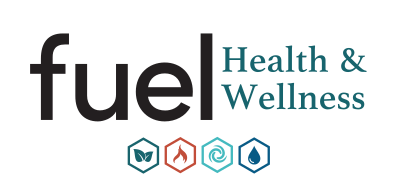Post-surgical recovery can present a series of challenges that affect mobility, pain sensation, and overall quality of life. For individuals in Grandville, integrating a comprehensive physical therapy in Grandville program after surgery is essential for regaining function and reducing the risk of complications. For more details, contact us for personalized support throughout your recovery journey. This article examines how physical therapy supports recovery by addressing issues like pain management, fall prevention, and tissue healing. It discusses the benefits of physical therapy modalities such as manual therapy, therapeutic exercises, cryotherapy, and ultrasound. The content also highlights patient success stories and reviews the importance of consistency and communication in therapy sessions. Ultimately, physical therapy is not only pivotal in restoring physical capability but also in improving mental well-being and promoting long-term independence following surgery. With expert guidance from local professionals at fuel health & wellness, patients can experience a smoother recovery journey and an enhanced quality of life.
Key Takeaways
- Physical therapy after surgery plays a crucial role in improving mobility, managing pain, and preventing complications.
- Manual therapies, therapeutic exercises, and modern modalities like ultrasound are integral techniques in recovery.
- Effective communication and consistent therapy sessions are key factors in achieving optimal post-surgical outcomes.
- Local patient success stories in Grandville demonstrate the transformative impact of personalized therapy programs.
- Comprehensive evaluations and tailored treatment plans ensure that every patient receives targeted care for their unique recovery needs.
Understand the Benefits of Physical Therapy After Surgery in Grandville

Understanding the benefits of physical therapy after surgery is paramount for achieving a full recovery. Physical therapy offers a multitude of advantages including improved range of motion, reduced pain, enhanced strength, and the prevention of post-operative complications such as falls or muscle atrophy. In the context of Grandville, where patients have access to top-rated rehabilitation centers, utilizing physical therapy helps bridge the gap between surgery and full functional independence.
Identify Key Advantages for Surgical Recovery Through Therapy
A key advantage of physical therapy is its ability to accelerate the recovery process through targeted interventions. Early mobilization after surgery can reduce risks associated with prolonged bed rest, such as deep vein thrombosis and muscle weakness.
By initiating tailored therapeutic exercises, patients often experience faster reductions in swelling and pain levels while promoting healthy circulation. Additionally, physical therapists are trained to monitor the patient’s progress and adjust the recovery plan based on individual needs. For individuals recovering from accidents, How Physical Therapy in Grandville Helps After Car Accidents provides essential strategies to improve balance, flexibility, and overall recovery outcomes.
Enhanced recovery quality leads to better surgical outcomes and a higher likelihood of returning to a pre-surgery level of activity.
Recognize How Therapy Supports Mobility and Strength
Therapy supports mobility by engaging different muscle groups through progressive exercises that build strength over time. These interventions typically include range-of-motion drills, gentle stretching, and strengthening exercises that target both the affected and supporting muscles. Physical therapists in Grandville employ techniques such as proprioceptive training and balance exercises to restore stability and coordination. Strengthening the muscles around the surgical site not only protects the repair but also minimizes stress on the joints. With consistent therapy sessions, many patients report a noticeable increase in confidence and decreased dependency on pain medication. Overall, these improvements create a solid foundation that enhances overall physical performance and reduces the risk of re-injury.
Explore Pain Management Strategies in Post-Surgical Care
Effective pain management is central to the success of physical therapy after surgery. Therapists work closely with patients to implement strategies that include non-pharmacologic interventions such as cryotherapy, heat therapy, manual therapy, and gentle range-of-motion exercises. Cryotherapy (cold therapy) is frequently used in the initial stages of recovery to reduce inflammation and numb pain, while heat therapy may be introduced later to relax muscles and promote blood flow. In addition, manual therapy techniques such as myofascial release help alleviate pain by reducing muscle tension and improving tissue elasticity. This multimodal approach not only ensures that patients experience a reduction in pain levels but also supports the healing process by increasing the overall range of motion. Pain management in physical therapy is critical because it allows patients to engage more actively with their treatment plan, increasing their likelihood of long-term recovery success.
Assess Improvements in Mental Well-Being Through Therapy
The benefits of physical therapy extend far beyond the physical realm, significantly impacting mental well-being. After surgery, many patients experience emotional distress due to pain, limited mobility, or uncertainty about their recovery outcomes. Engaging in physical therapy helps alleviate anxiety and depression by fostering feelings of empowerment and progress. Movement-based therapies release endorphins, natural chemicals in the brain that help reduce stress and elevate mood. Regular sessions also provide a structured environment where patients can set achievable goals, leading to a sense of accomplishment and renewed optimism. The support from therapists and peer groups further reinforces a patient’s commitment, which ultimately contributes to improved mental health. This holistic improvement is essential because mental resilience plays a crucial role in overall recovery and the capacity to manage post-operative challenges.
Evaluate Common Physical Therapy Techniques Used After Surgery
Common physical therapy techniques employed after surgery include manual therapy, therapeutic exercises, modalities such as ultrasound and electrical stimulation, and even aquatic therapy. Manual therapy focuses on hands-on techniques that mobilize soft tissues and joints, while therapeutic exercises aim to rebuild strength and endurance via a structured routine. Ultrasound therapy uses sound waves to stimulate tissue repair and reduce inflammation, making it an effective option for chronic cases. Electrical stimulation offers another avenue by using controlled electrical currents to promote muscle contraction and accelerate tissue healing. Aquatic therapy, performed in warm water pools, reduces the load on joints and allows for safe movement, which is particularly beneficial for patients with significant mobility restrictions. The integration of these varied techniques not only addresses immediate recovery needs but also lays the groundwork for long-term health and improved physical function.
Highlight Effective Physical Therapy Techniques for Recovery

Highlighting effective physical therapy techniques is essential for understanding how each method contributes uniquely to a patient’s recovery. Diverse approaches are employed by therapists to help patients regain function, build strength, and reduce discomfort. The following sections delve into manual therapy methods, therapeutic exercises, advanced modalities, aquatic therapy, and the importance of personalized treatment plans—all key components in the effective rehabilitation process in Grandville.
Examine Manual Therapy Methods and Their Impact on Healing
Manual therapy represents a cornerstone of physical therapy programs after surgery. Through hands-on techniques such as massage, myofascial release, joint mobilization, and stretching, therapists can address adhesions and tissue restrictions that may limit mobility or cause pain. In particular, manual therapy has been shown to improve blood circulation to the affected area, which accelerates healing by supplying oxygen and nutrients to damaged tissues. By manually manipulating soft tissue structures, therapists help maintain or restore the natural alignment and function of joints and muscles. Data from various studies indicate that patients who receive regular manual therapy experience better range of motion and report lower pain levels, typically noting improvements within a few weeks of consistent treatment. Manual therapy also plays a role in educating patients about proper posture and movement patterns, fostering self-management techniques that are critical for avoiding future injury. In Grandville, experienced practitioners at local clinics incorporate these methods to provide personalized care that directly addresses each patient’s unique healing challenges.
Discover the Benefits of Therapeutic Exercises Post-Surgery
Therapeutic exercises are designed to build strength, endurance, and flexibility, all of which are crucial for post-surgical recovery. These exercises typically begin with gentle movements to promote circulation and gradually advance to more vigorous activities that challenge the muscles and joints.
Progressive resistance training, stretching routines, and balance exercises are often included in a comprehensive rehabilitation program. One of the key benefits of therapeutic exercises is their ability to restore proper function by emulating natural movements, thereby reducing the risk of re-injury. Additionally, a structured exercise regimen helps in correcting muscle imbalances and improving overall biomechanics. Patients in Grandville practicing these exercises have shown measurable improvements in functional independence, with many reporting enhanced walking patterns and reduced reliance on assistive devices.
For deeper insights into how professionals in the area tailor therapy programs for recovery, How Physical Therapists in Grandville Address Common Issues offers valuable guidance on effective rehabilitation techniques.
Regular engagement in therapeutic exercises not only accelerates physical recovery but also boosts patient morale by outlining clear progress markers and achievable milestones. The cumulative effect of these exercises is a marked improvement in stability, endurance, and overall quality of life.
Investigate Modalities Like Ultrasound or Electrical Stimulation
In addition to manual and exercise-based interventions, modern modalities like ultrasound therapy and electrical stimulation are integral to post-surgical recovery. Ultrasound therapy utilizes sound waves to generate deep heat within tissues, promoting collagen synthesis and tissue repair. This modality is particularly effective in reducing inflammation and alleviating pain in deeply situated muscles and joints. On the other hand, electrical stimulation is used to initiate muscle contractions, thereby preventing atrophy and enhancing muscle re-education. Studies have shown that using these modalities together can result in a synergistic effect, yielding faster recovery times and improved overall outcomes. Patients benefit from these technologies by experiencing reduced swelling, enhanced circulation, and accelerated muscle recovery—all vital factors for regaining strength and mobility. In Grandville, leading physical therapy centers integrate these advanced techniques into their standard treatment protocols, ensuring that patients receive state-of-the-art care tailored to their specific recovery needs.
Review the Role of Aquatic Therapy in Rehabilitation Efforts
Aquatic therapy is another highly effective technique in the post-surgical rehabilitation toolkit. Exercising in water diminishes the gravitational forces on the body, reducing stress on the joints and making movement easier and less painful. The buoyancy of water allows patients to perform exercises they might find too strenuous on land, improving flexibility and strength without overloading healing tissues. Aquatic therapy sessions often include deep-water running, resistance exercises, and stretching routines. These activities not only promote cardiovascular fitness but also support the natural movement patterns essential for daily activities. Additionally, the warm water environment can help relax muscles and reduce spasm, contributing to overall pain relief. Numerous case studies have documented significant improvements in mobility and reduction in pain among patients participating in aquatic therapy sessions, especially those recovering from lower-extremity surgeries. The availability of dedicated aquatic therapy facilities in Grandville represents a valuable asset for patients recovering from surgery, offering a safe and effective environment to enhance their rehabilitation process while minimizing discomfort.
Assess the Importance of Personalized Treatment Plans
Personalized treatment plans are the cornerstone of a successful physical therapy program, ensuring that each intervention is tailored to the patient’s unique needs and surgical history. No two patients recover in the same way, which is why individualized evaluations are critical. A personalized plan typically begins with a thorough assessment that includes a review of the patient’s medical history, current functional limitations, pain levels, and specific recovery goals. Based on this evaluation, physical therapists in Grandville design a targeted rehabilitation program that may combine manual therapy, therapeutic exercises, and advanced modalities such as ultrasound or electrical stimulation. Regular re-assessments allow therapists to monitor progress and adjust the treatment plan as necessary to ensure optimal outcomes. These customized approaches not only speed up recovery but also empower patients by involving them in their own care decisions and setting realistic, incremental goals. This collaborative process enhances patient commitment, improves adherence to therapy schedules, and ultimately leads to more successful post-surgical recoveries. Individualized treatment plans represent a best practice model endorsed by rehabilitation experts, ensuring that every patient receives the precise care they need to restore function and quality of life.
Explore the Role of Communication in Physical Therapy Sessions
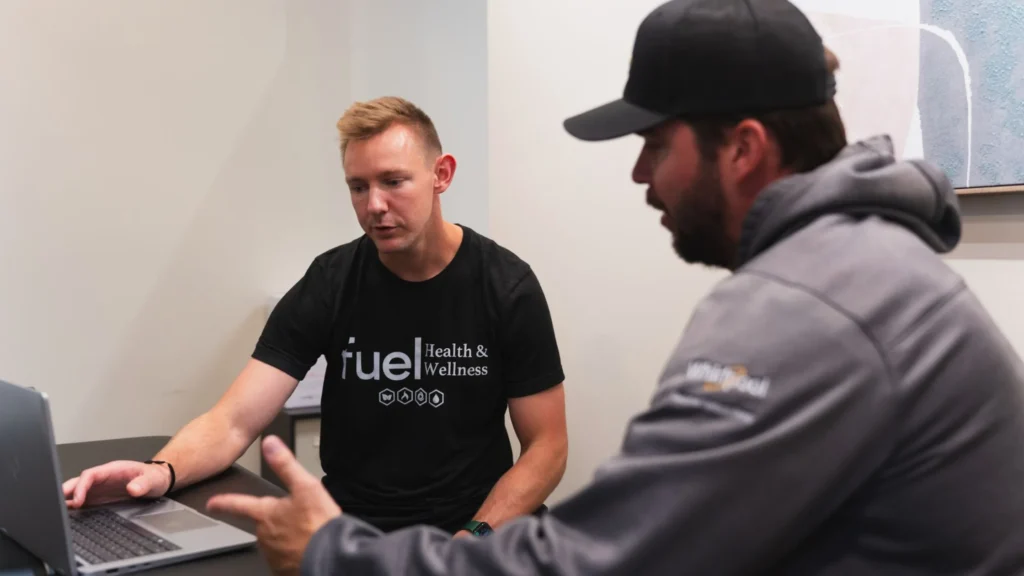
Effective communication in physical therapy sessions plays a vital role in ensuring successful recovery outcomes. Open dialogue between the patient and therapist allows for the timely identification of issues, better customization of treatment plans, and an overall improvement in patient satisfaction. In Grandville, communication is viewed as a foundation for high-quality care, directly affecting recovery speed and healing quality. By articulating concerns, setting realistic expectations, and providing continuous feedback, patients can take an active role in their rehabilitation process.
Understand the Importance of Expressing Concerns to Therapists
Expressing concerns openly to therapists is a critical step in optimizing post-surgical rehabilitation. Patients who communicate their pain levels, mobility challenges, or emotional stress allow therapists to modify treatment plans in real time. This level of transparency helps prevent minor issues from escalating into major setbacks. For instance, if a patient experiences unusual discomfort during a specific exercise, informing the therapist can lead to immediate modifications or the introduction of alternative techniques. Clinical research suggests that clinics with open communication channels report quicker patient recovery times and higher satisfaction rates. In Grandville, patients are encouraged to maintain a candid dialogue with their therapists, ensuring that all concerns are addressed promptly. This proactive approach leads to safer, more effective therapy sessions and supports overall recovery goals.
Recognize the Value of Collaborative Goal-Setting in Therapy
Collaborative goal-setting between patients and therapists is fundamental in establishing a clear, structured path to recovery. By outlining specific, measurable, achievable, relevant, and time-bound (SMART) goals, both parties create a roadmap that guides the therapy process. This collaboration fosters a sense of ownership and commitment among patients, as they are active participants in determining their rehabilitation priorities. When patients understand the rationale behind each exercise or modality, they are more likely to adhere to their treatment schedules. In turn, therapists benefit by having clear performance benchmarks to assess progress. The resulting synergy has been shown to enhance rehabilitation outcomes, leading to improved mobility and reduced pain. In Grandville, many physical therapy programs incorporate regular goal-setting sessions, which serve as checkpoints for progress and motivation. This method ensures alignment between therapy objectives and patient expectations, contributing significantly to successful recovery.
Explore How Regular Feedback Enhances Treatment Effectiveness
Regular feedback plays an instrumental role in fine-tuning physical therapy interventions. When patients provide updates on their progress, pain levels, or difficulties encountered during exercises, therapists can adjust the treatment plan accordingly. Feedback mechanisms might include verbal check-ins, standardized pain assessment scales, and functional tests. These practices help track improvements over time and signal early warnings if progress stalls. In addition, feedback fosters a supportive therapeutic relationship, where patients feel heard and valued. Research indicates that such communication not only enhances physical recovery but also improves psychological well-being by reducing anxiety and boosting patient confidence. In renowned Grandville clinics, structured feedback sessions are a routine part of every therapy session, emphasizing the collaborative nature of the treatment process. The incorporation of regular feedback ensures that therapy remains dynamic and responsive to the patient’s evolving needs, ultimately maximizing the effectiveness of the rehabilitation program.
Identify How Family Involvement Can Support Recovery
Family involvement is a critical component in supporting physical therapy recovery, particularly in the post-surgical phase. When family members participate in therapy sessions—either through direct presence or by offering logistical and emotional support—they contribute significantly to the patient’s overall recovery. Their involvement can help reinforce the importance of consistent therapy attendance and adherence to prescribed exercises. Family members can also provide a comforting environment that eases feelings of isolation or frustration during the recovery process. In clinical settings in Grandville, family-inclusive programs have been observed to boost patient morale and improve treatment outcomes. The encouragement and accountability provided by family members enable patients to push through challenging sessions and celebrate small victories, which further motivates them along their recovery journey. Moreover, therapists often work with families to educate them on how best to assist with at-home care, ensuring that treatment protocols are adequately followed outside the therapy center. Thus, involving family members is an invaluable strategy that not only accelerates physical recovery but also supports mental and emotional well-being.
Assess the Impact of Education on Recovery Outcomes
Education is a pivotal element in enhancing recovery outcomes in physical therapy. When patients understand the underlying principles behind their treatment plan, they are more likely to adhere to prescribed exercises and lifestyle modifications. Educational sessions provided by therapists help demystify complex rehabilitation techniques, enabling patients to execute exercises correctly at home. This knowledge transfer empowers patients to take control of their recovery process, making them active agents of change rather than passive recipients of care. In many Grandville clinics, patient education programs are integrated into the therapy regimen, including instructional videos, workshops, and one-on-one training sessions. These initiatives ensure that patients have a clear understanding of how their bodies are healing and what they can do to support this process. Improved health literacy translates into better self-care, reduced dependency on continuous professional intervention, and ultimately, a higher quality of life post-surgery. The positive impact of education in physical therapy is so profound that many studies have correlated comprehensive patient education with shorter recovery times and more sustainable rehabilitation outcomes.
Review Patient Success Stories in Grandville
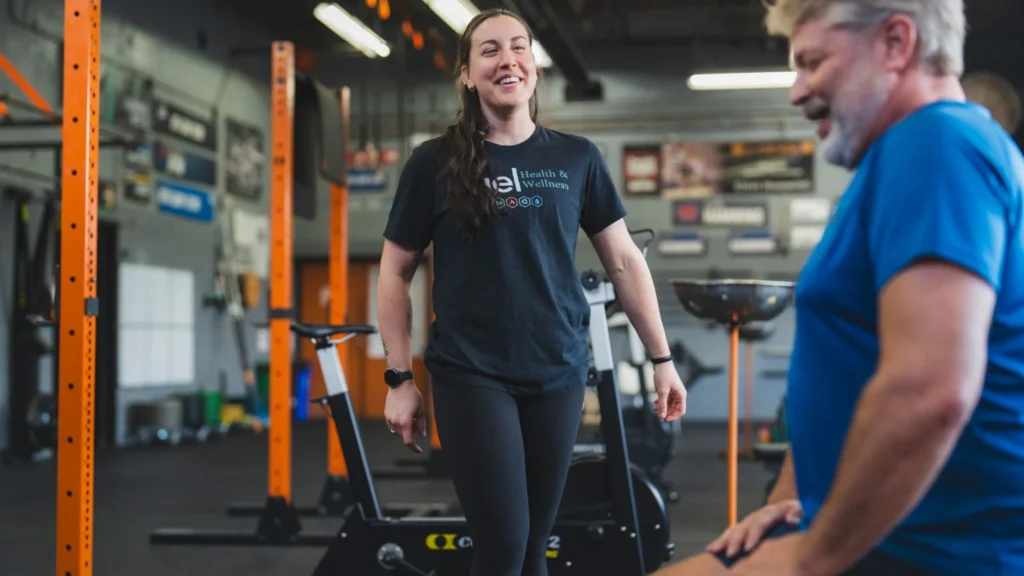
Patient success stories in Grandville serve as powerful testimonials to the effectiveness of physical therapy in post-surgical recovery. These real-world accounts highlight how tailored therapy programs can significantly improve physical function and quality of life. Success stories often showcase individuals who have overcome significant challenges such as chronic pain, limited mobility, and reduced independence. Their detailed narratives not only inspire new patients but also provide valuable insights and strategies for overcoming common recovery hurdles.
Share Inspirational Accounts of Local Recovery Journeys
Several local patients have shared their inspirational recovery journeys, emphasizing the transformative power of comprehensive physical therapy. One such case involved a senior patient who, after undergoing knee replacement surgery, was initially unable to walk unassisted. Through a personalized therapy plan that incorporated both manual therapy and progressive resistance exercises, the patient regained sufficient strength and balance to resume daily activities. In another instance, a middle-aged individual recovering from shoulder surgery reported a significant reduction in pain and an increase in range of motion after consistent therapy sessions over several months. These success stories underscore the importance of early intervention, adherence to customized treatment plans, and the supportive environment provided by local physical therapy practitioners. The narratives not only illustrate remarkable physical improvements but also highlight the accompanying boosts in self-esteem and mental well-being—all of which are critical for long-term recovery.
Highlight Diverse Cases and Treatment Backgrounds
Diversity among patient cases in Grandville illustrates that physical therapy programs can be adapted to meet a wide range of needs. Patients from different age groups and with varying degrees of surgical complexity have benefited from individualized rehabilitation plans.
Some patients required intensive manual therapy and adjunct modalities like cryotherapy, while others excelled with activity-based therapies focused on restorative exercises. For example, one patient experiencing severe scar tissue formation following abdominal surgery benefited immensely from a combination of soft tissue mobilization and stretching exercises. Another patient, recovering from a spinal surgery, saw marked improvements through a program emphasizing core stabilization and balance training.
Such diverse treatment backgrounds reveal that regardless of the surgical procedure or baseline functional status, physical therapy remains an effective means to reclaim stability, strength, and overall well-being. For those preparing for rehabilitation, What to Expect During Your First Physical Therapy Session in Grandville provides valuable insights on personalized treatment approaches and recovery expectations.
These varied cases also serve as a reminder that successful rehabilitation is not one-size-fits-all—it requires the careful customization of techniques to suit each individual’s unique recovery journey.
Explore the Motivations Driving Patient Commitment to Therapy
Patients’ commitment to physical therapy is often driven by a strong desire to reclaim independence and return to a previous level of physical activity. Personal motivation frequently emerges from the hope of reducing long-term pain, regaining lost function, and preventing secondary complications. Patients in Grandville have expressed that the visible progress achieved through structured therapy sessions reinforces their determination to persist with their rehabilitation programs. Moreover, witnessing early improvements, such as reduced discomfort during movement or enhanced flexibility, serves as a continuous source of encouragement. Local success stories reveal that robust therapist-patient relationships, established through regular communication and mutual trust, are instrumental in maintaining high levels of commitment. Patients motivated by clearly defined goals and supported by highly skilled therapists are more likely to adhere to their prescribed routines, demonstrating that both the quality of care and the personal drive of the individual are critical components in achieving long-term recovery.
Assess the Role of Physical Therapy in Achieving Optimal Results
Physical therapy plays an indispensable role in achieving optimal post-surgical outcomes. The structured interventions provided by trained professionals help in restoring lost functions, mitigating complications, and promoting overall wellness. The success stories in Grandville are a testament to the transformative benefits of therapy—from significant improvements in strength and range of motion to enhanced balance and reduced reliance on pain medication. Regular assessments and progress tracking enable therapists to modify treatment plans in real time, ensuring that patients receive the most effective care possible. By combining evidence-based practices with individualized attention, physical therapy ensures that patients not only recover more quickly but also build a sustainable foundation for long-term health and independence. This holistic approach addresses both the physical and psychological aspects of recovery, ultimately enhancing quality of life and enabling patients to return to their normal routines with renewed confidence.
Present Testimonials From Patients About Their Experiences
Patient testimonials highlight the life-changing impact of physical therapy within the Grandville community. Patients consistently report that their experience with physical therapy has been transformative, noting substantial improvements in pain management, mobility, and overall quality of life. One patient remarked, “After my surgery, I didn’t believe I could ever walk without assistance again. Thanks to my dedicated therapist and a personalized exercise plan, I’m now moving freely and feeling more confident every day.” Another shared, “The hands-on care and constant encouragement were pivotal in my recovery, and I now have the strength to resume activities I once thought were impossible.” Such testimonials serve as powerful endorsements of the value of physical therapy, reinforcing that targeted, compassionate care can lead to extraordinary recovery outcomes.
Investigate the Importance of Consistency in Therapy Sessions
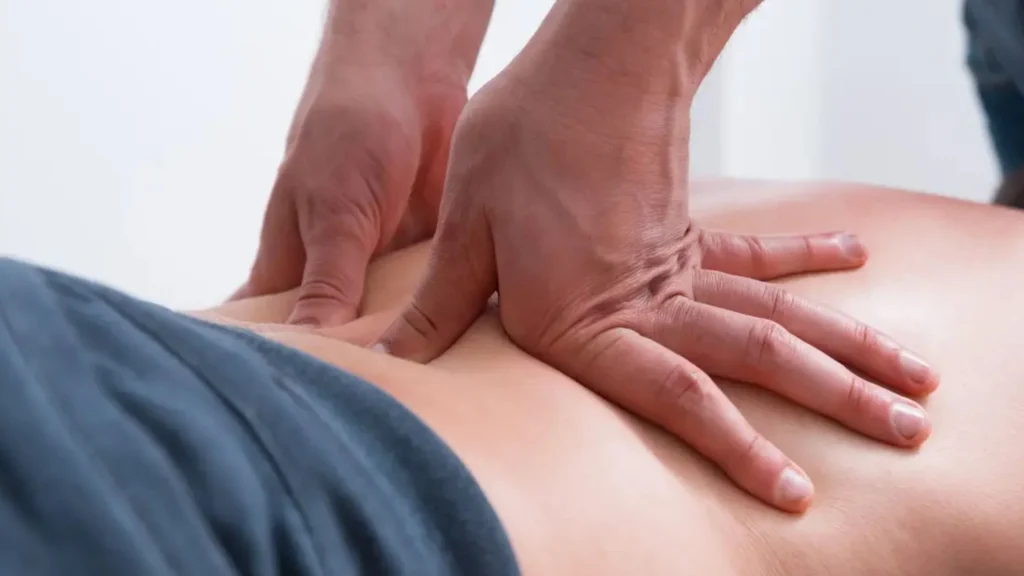
Consistency in therapy sessions is a critical factor that directly influences the recovery rate following surgery. Regular attendance enables patients to build upon incremental gains, which in turn, solidifies improvements in strength, mobility, and pain management. For individuals in Grandville, where access to quality physical therapy is readily available, maintaining a consistent therapy schedule is essential for achieving and sustaining long-term recovery results.
Understand How Regular Attendance Influences Recovery Rates
Regular attendance at therapy sessions is directly linked to better recovery outcomes. Each session provides an opportunity to address any emerging issues, reinforce progress, and implement adjustments based on ongoing assessments. Studies have demonstrated that patients who commit to disciplined therapy schedules experience a more rapid reduction in pain and inflammation, as well as a faster return of function. This consistent engagement helps to optimize the body’s natural healing processes, reduce complications, and prevent setbacks caused by inactivity. In the context of post-surgical rehabilitation, even minor lapses in attendance can lead to a regression in progress. Therefore, committed participation in therapy sessions is a proactive measure that promotes sustained improvements and supports the overall rehabilitation timeline.
Identify Methods to Stay Committed to Therapy Schedules
Patients can adopt several strategies to maintain consistent attendance in their therapy sessions. One effective method is setting clear, realistic goals at the outset of the rehabilitation process. By defining specific objectives—such as the ability to walk unassisted or perform daily activities without significant pain—patients are more likely to remain motivated. Additionally, scheduling therapy sessions at regular intervals and integrating them into their weekly routines can help reinforce the habit. Utilizing mobile apps or calendars for reminders, engaging family members to provide support, and maintaining open communication with therapists are all strategies that foster adherence. Group therapy sessions or community-based programs can also offer social support, further enhancing commitment. In Grandville, clinics often provide personalized follow-up plans and educational resources that underscore the importance of maintaining a consistent therapy schedule, ensuring that patients do not miss out on vital recovery interventions.
Evaluate the Impact of Skipping Sessions on Progress
Skipping therapy sessions can have a detrimental effect on surgical recovery, as the continuity of care is crucial for maintaining gains achieved during previous sessions. Each missed appointment represents lost opportunity for intervention and progress evaluation, potentially leading to muscle stiffness, decreased endurance, and slower healing. Research indicates that inconsistent therapy attendance may result in prolonged recovery times and an increased likelihood of setbacks or complications. For example, patients who miss multiple sessions have been observed to experience setbacks in range of motion and diminished muscle strength, which can negate the benefits of earlier therapy sessions. Moreover, irregular attendance can disrupt the therapist’s ability to tailor the treatment plan effectively, thereby compromising overall outcomes. Hence, it is essential that patients understand the serious impact of skipped sessions and strive to adhere to their scheduled therapy visits for the best possible recovery results.
Explore the Connection Between Consistency and Independence
One of the primary goals of post-surgical physical therapy is to restore a patient’s independence. Consistency in therapy facilitates progressive improvement, ultimately leading to greater autonomy in daily activities. Through regular practice, patients build the strength, balance, and confidence necessary to perform activities without constantly relying on assistance. As patients become more independent, their overall quality of life improves dramatically. In Grandville, where many individuals value self-sufficiency, the correlation between regular therapy attendance and achieving independence is a compelling motivator. Consistent exercise and progression also minimize the risk of future injuries, further supporting long-term independence. The cumulative effect of ongoing therapy is a well-rounded recovery that not only restores physical function but also instills the confidence needed to resume normal life with minimal external support.
Recognize How Time Management Supports Therapy Adherence
Effective time management is a fundamental factor in ensuring consistent attendance at therapy sessions. Patients with demanding schedules may struggle to balance work, family, and their rehabilitation needs. However, strategic planning and time allocation can significantly enhance adherence to therapy appointments. Utilizing planners, setting reminders, and even coordinating transportation ahead of time are practical measures that can reduce the likelihood of missing a session. Many Grandville therapy centers offer flexible scheduling options to accommodate patients’ varied commitments, further supporting effective time management. In addition, therapists often provide guidance on how to integrate therapy routines seamlessly into daily life, making the process less burdensome and more sustainable over the long term. When patients successfully manage their time, they create a structured environment that not only promotes consistent attendance but also reinforces the importance of each therapy session in the overall recovery journey.
Find Local Physical Therapy Options in Grandville
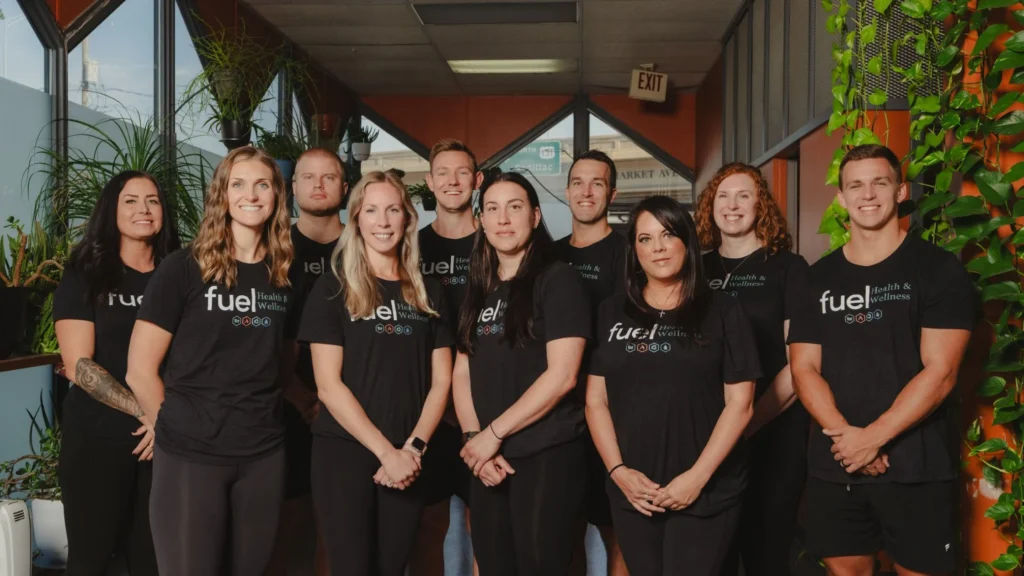
Finding local physical therapy options in Grandville is an essential first step in ensuring optimal post-surgical recovery. With numerous clinics and treatment centers available, patients have the opportunity to choose providers that offer specialized programs tailored to their specific needs. The key to effective recovery lies in selecting a facility with experienced therapists, state-of-the-art equipment, and a commitment to personalized care. Local options provide the added benefit of convenience and close proximity for regular appointments, reducing the stress and logistical challenges associated with long-distance travel for therapy sessions.
Identify Top-Rated Physical Therapy Clinics in the Area
Grandville is home to a number of highly rated physical therapy clinics that are known for their expertise and comprehensive treatment programs. These clinics often feature multidisciplinary teams including certified physical therapists, orthopedic specialists, and rehabilitation experts. Clinics such as Fuel Health & Wellness have garnered positive testimonials for their patient-centered approach, innovative treatment protocols, and exceptional success rates in post-surgical recovery. In evaluating local clinics, factors such as accreditation, patient reviews, and years of experience are critical metrics for assessing quality. Top-rated centers offer fully equipped facilities that include therapy gyms, aquatic therapy pools, and advanced diagnostic tools for gait analysis and muscle performance assessments. By choosing a clinic with a strong reputation, patients in Grandville can feel confident that they will receive the highest standard of care tailored specifically to their recovery requirements.
Compare Specialized Services Offered by Different Providers
A thorough comparison of specialized services is essential when selecting a local physical therapy provider. Some clinics may focus primarily on manual therapy and traditional rehabilitation techniques, while others incorporate advanced modalities such as ultrasound therapy, electrical stimulation, and even emerging techniques like cryotherapy. It is important for patients to assess which services align best with their specific surgical recovery needs. For example, a patient recovering from knee surgery might benefit from a provider with an extensive program in strength training and gait analysis, whereas someone recovering from shoulder surgery may require a clinic with extensive experience in manual therapy and proprioceptive re-education. Comparative evaluations should also include an examination of service packages, treatment durations, and any value-added benefits such as home exercise programs or tele-rehabilitation sessions. This level of detail ensures that patients choose a provider who not only meets their immediate post-surgical requirements but also offers a comprehensive continuum of care.
Explore Insurance Coverage and Payment Options for Therapy
Insurance coverage and payment options play a significant role in a patient’s access to quality physical therapy. In Grandville, many physical therapy clinics accept a variety of insurance plans including Medicare, Medicaid, Cigna, Aetna, and Tricare, among others. Patients should verify that their chosen clinic accepts their insurance provider, which can help alleviate the financial burden associated with multiple therapy sessions. Additionally, some clinics offer flexible payment plans or sliding-scale fees for patients who may not have comprehensive coverage. It is advisable to contact clinics directly to understand billing practices, co-pay details, and any potential out-of-pocket expenses. Transparent communication regarding financial aspects not only aids in making an informed decision but also builds trust between patients and providers, ensuring that financial concerns do not become a barrier to consistent treatment.
Assess the Convenience of Locations and Facilities
The convenience of the clinic’s location and the overall quality of its facilities are crucial factors in sustaining a consistent therapy schedule. For post-surgical patients, especially those with limited mobility, proximity to home or easy access via public transportation can significantly reduce stress and enhance compliance with treatment plans. Patients should consider whether the facility offers ample parking, wheelchair accessibility, and a welcoming, comfortable environment. Many top-tier clinics in Grandville pride themselves on creating an ambiance that supports healing, with amenities designed to make therapy sessions as accessible and stress-free as possible. A convenient location not only reduces logistical hassles but also encourages regular attendance, which is critical for optimal recovery outcomes. Reviews and personal recommendations from other patients can serve as useful indicators of a facility’s convenience and overall environment.
Understand the Importance of Researching Therapists’ Qualifications
Before embarking on any physical therapy program, it is imperative for patients to research the qualifications and experience of the therapists involved in their care. In Grandville, leading clinics often highlight the credentials, certifications, and areas of expertise of their therapists on their websites. This information helps patients make informed decisions about who will be managing their recovery. Certifications from recognized bodies, advanced training in specific therapeutic modalities, and a proven track record in post-surgical rehabilitation are signs of high-quality care. Patients are encouraged to ask potential providers about their treatment philosophies, success rates, and the latest techniques they use. Informed patients who are aware of the qualifications of their caregivers tend to have greater confidence in their treatment and are more motivated to engage actively in the rehabilitation process. Ensuring that therapists are well-qualified and experienced is a critical step in the journey toward a successful and speedy recovery.
Frequently Asked Questions
What makes physical therapy essential after surgery?
Physical therapy is essential because it helps restore mobility, reduce pain, and prevent complications such as muscle atrophy or falls. It also supports healing through tailored exercises and advanced modalities.
How soon should a patient start physical therapy after surgery?
Typically, therapy begins as soon as it is medically safe, often within a few days to weeks post-surgery, to promote early mobilization and prevent potential complications from prolonged inactivity.
Can physical therapy help manage post-surgical pain?
Yes, therapy includes various techniques such as manual therapy, cryotherapy, and therapeutic exercises that help manage and reduce pain while improving function and range of motion.
How does communication with the therapist affect recovery outcomes?
Open communication allows for adjustments to treatment plans based on patient feedback, ensures that concerns are promptly addressed, and fosters a collaborative environment that enhances overall recovery.
What factors should be considered when choosing a physical therapy clinic in Grandville?
Important factors include the clinic’s reputation, the qualifications of its therapists, the range of specialized services offered, convenience of location, and insurance and payment options available.
Final Thoughts
Physical therapy plays a transformative role in post-surgical recovery in Grandville. By combining manual therapy, therapeutic exercises, advanced modalities, and a commitment to effective communication, patients achieve improved mobility, reduced pain, and enhanced independence. The personalized approach that local clinics offer ensures that each patient receives targeted care tailored to their unique needs. At Fuel Health & Wellness, we specialize in comprehensive physical therapy solutions that support recovery, promote strength, and enhance overall well-being. Consistent therapy sessions, coupled with family involvement and thorough patient education, create an optimal environment for speedy recovery. Ultimately, embracing a comprehensive physical therapy program not only accelerates healing but also improves long-term quality of life, paving the way for a full return to active living.
